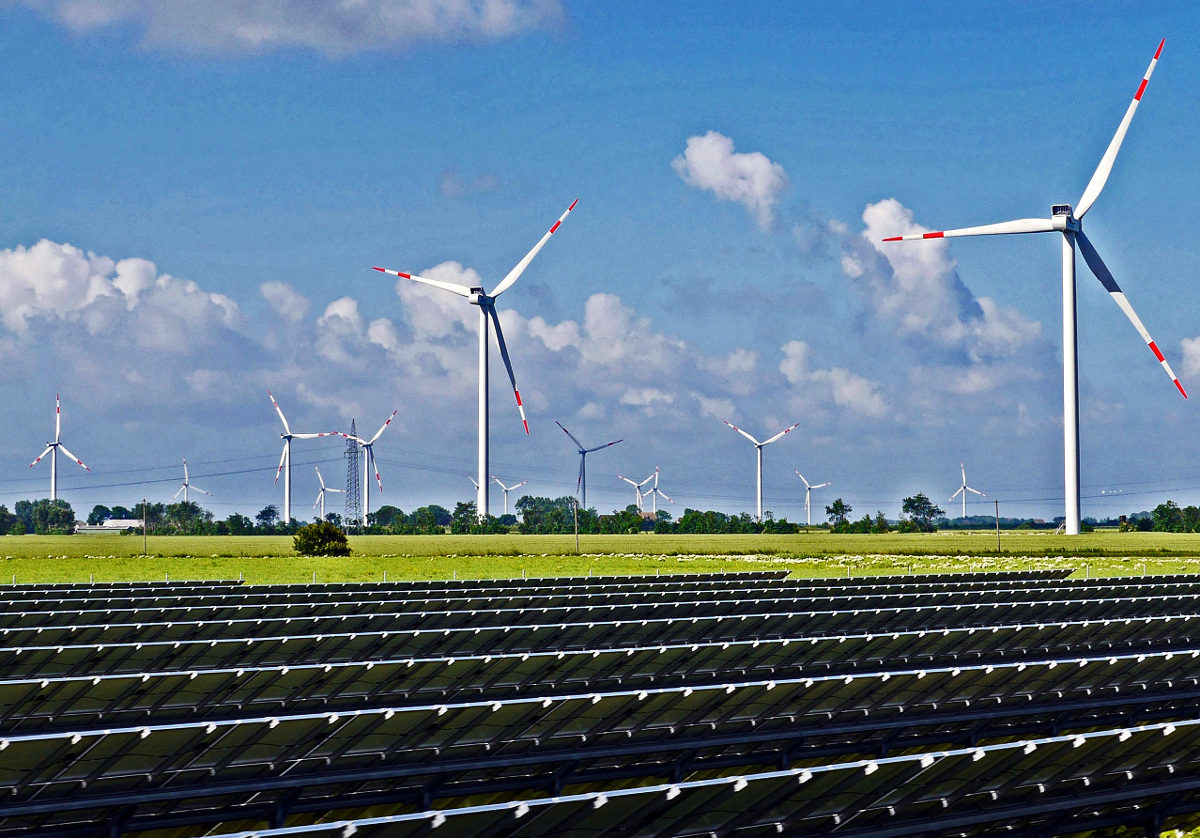India’s total installed power generation capacity reached 416 GW as of March 31, 2023, with renewables accounting for 125 GW (30%) and hydro 47 GW (11%), according to a report by the Council on Energy, Environment and Water’s Centre for Energy Finance (CEEW-CEF). The report added another 83 GW of RE was under implementation as of February 2023.
India has committed to 50% of cumulative installed power capacity from non-fossil fuel-based sources by 2030 under its Nationally Determined Contributions.
The CEEW-CEF’s Market Handbook for 2022-23 identifies and analyses trends critical to India’s energy transition.
The report stated India added a net power generation capacity of 16.6 GW in FY 2022-23. This included 15.3 GW (92.2%) renewable energy, 1.2 GW (7%) coal/lignite, and 0.1 GW (0.8%) hydro.
The report highlighted that solar (grid-scale and rooftop) continued to take the lead, accounting for 84% (12.8 GW) of the RE capacity addition. Wind capacity addition doubled year-on-year to 2.3 GW.
The share of small hydro and bio-power stood at 0.6% and 0.8%, respectively
Gagan Sidhu, director at CEEW-CEF, said, “There are several positive indicators of India’s renewable energy capacity maturing and evolving beyond the solar-focussed market of recent years. FY23 saw wind capacity addition pick up again and, in fact, the newly notified renewable purchase obligation (RPO) trajectory has a dedicated wind RPO to be met with projects commissioned after March 31, 2022. Further, procurement under innovative formats such as hybrids and RE plus storage accounted for 31% of the capacity auctioned during the year. Finally, over 4 GWh of standalone energy storage tenders were concluded.”
In March 2023, the Ministry of New and Renewable Energy directed renewable energy implementing agencies to conduct bids for 50 GW of RE capacity annually until FY 2028. The report authors found that 10 GW of RE capacity was auctioned in FY 2022-23 and another 41 GW was under the tendering process. FY 2022-23 was also a significant year for energy storage with 4.02 GWh of standalone energy storage tenders concluded.
Ruchita Shah, programme associate at CEEW-CEF, said, “FY23 has been a pivotal year for renewable energy. First, the reverse auction mechanism for wind projects was scrapped and the MNRE announced a five-year RE bidding trajectory that directs the REIAs to conduct 50 GW bids annually till FY28. A long-term bidding trajectory will provide a clear vision to RE developers, enabling them to plan financing and manage their supply chain for a longer duration. In addition, it will support the domestic RE manufacturing industry in estimating the demand for solar modules, wind turbine generators and other components.”
This content is protected by copyright and may not be reused. If you want to cooperate with us and would like to reuse some of our content, please contact: editors@pv-magazine.com.









1 comment
By submitting this form you agree to pv magazine using your data for the purposes of publishing your comment.
Your personal data will only be disclosed or otherwise transmitted to third parties for the purposes of spam filtering or if this is necessary for technical maintenance of the website. Any other transfer to third parties will not take place unless this is justified on the basis of applicable data protection regulations or if pv magazine is legally obliged to do so.
You may revoke this consent at any time with effect for the future, in which case your personal data will be deleted immediately. Otherwise, your data will be deleted if pv magazine has processed your request or the purpose of data storage is fulfilled.
Further information on data privacy can be found in our Data Protection Policy.